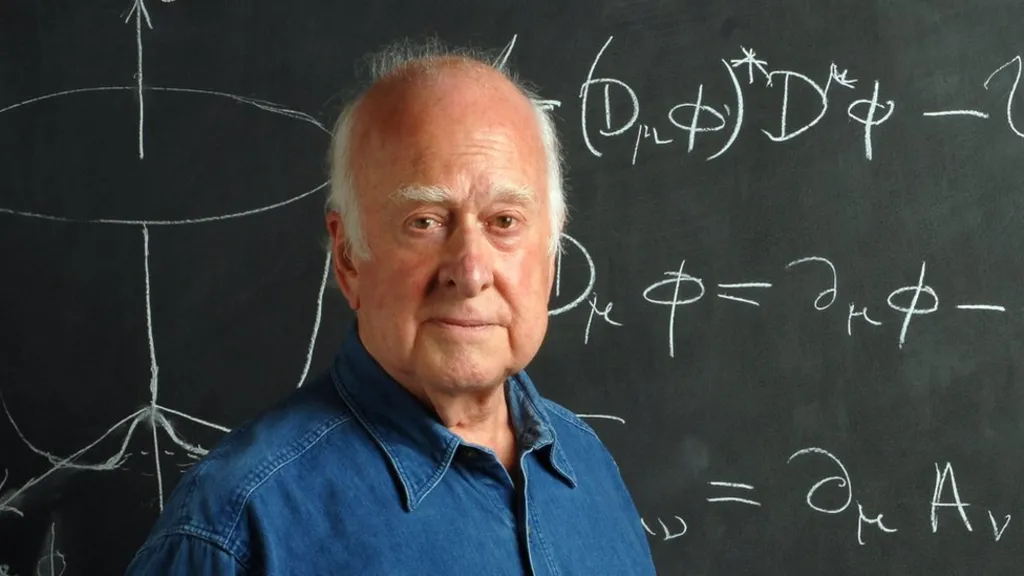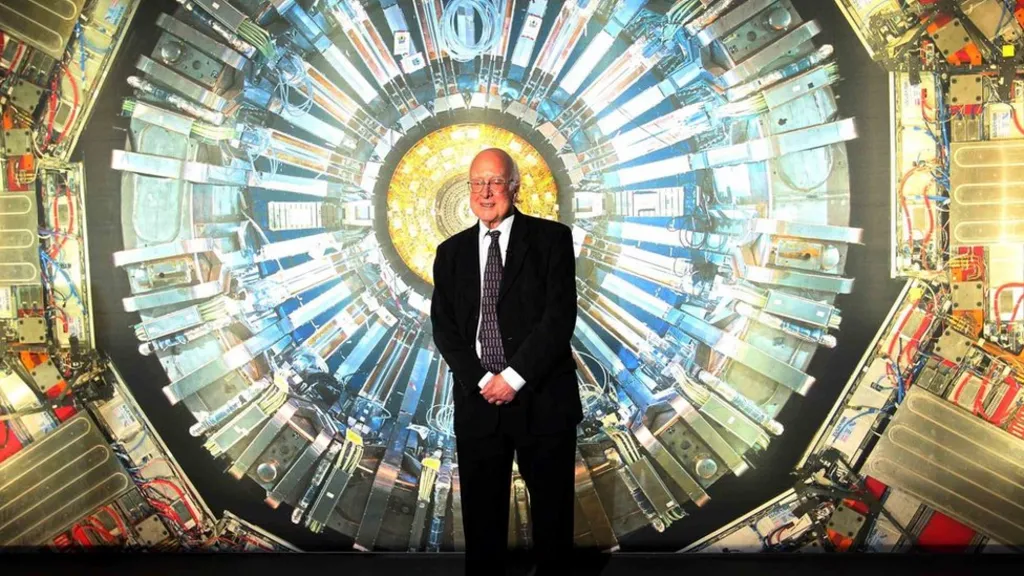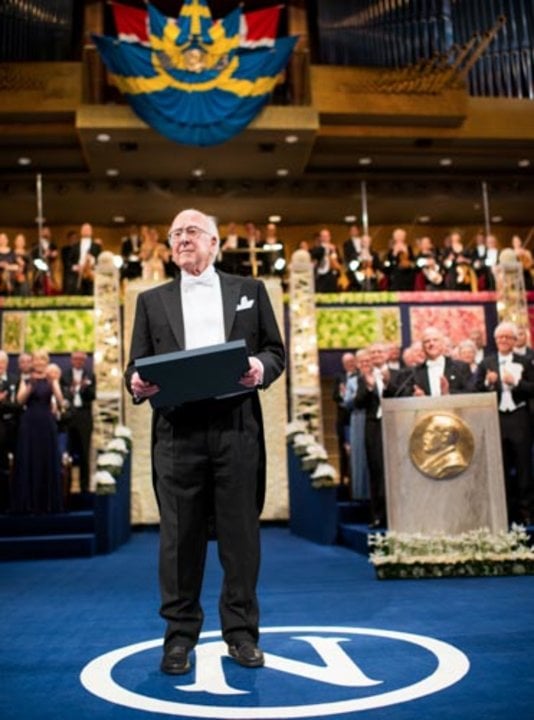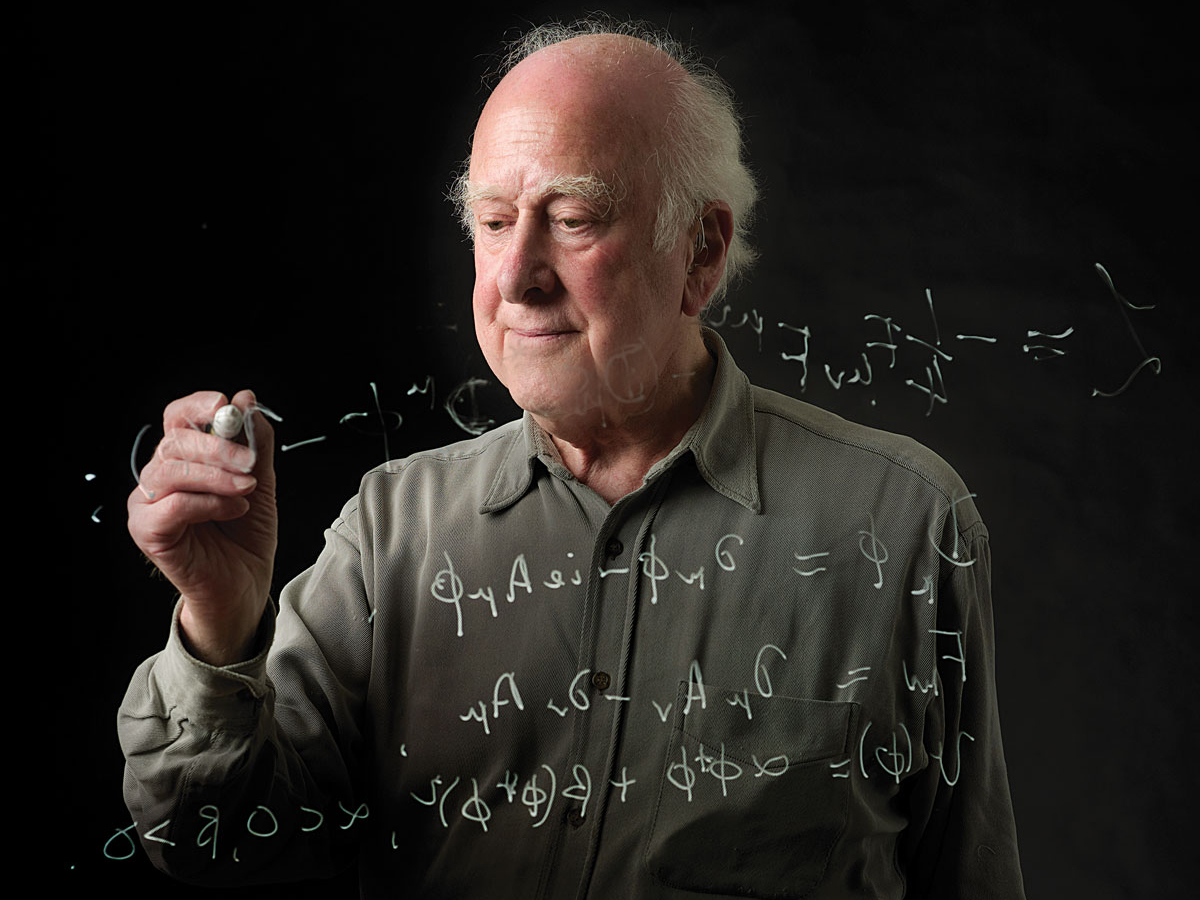Professor Peter Higgs [1929 - 2024]
credit: University of Edinburgh
In July 2012, scientists found the long awaited Higgs Boson, a particle that, according to theoretical physics, gives all elementary particles mass. Without the Higgs boson, these particles would remain mass less, and our bodies, blankets, cups of tea, dogs, and universe wouldn’t exist.
Professor Higgs predicted the existence of a unique type of fundamental particle - now named the Higgs boson in his honour - which is essential in allowing the mathematics of the standard model to work.
In the 1960s Higgs and other physicists worked on an idea to explain why the building blocks of the Universe have mass.
It sparked a search for the 'Holy Grail of physics' - a particle that could explain three fundamental forces (electromagnetism and the weak and the strong nuclear forces) in one theory.
In 2012 scientists using the Large Hadron Collider at the European Organization for Nuclear Research (CERN) in Switzerland finally discovered it - they named it the Higgs boson.
A year later, 2013, Higgs' work was recognised in his Nobel Prize which he shared with Francois Englert of Belgium.
Peter Higgs & François Englert
Nobel Prize in Physics 2013
credits: Maximilien Brice/CERN
François Englert (left) and Peter Higgs at CERN on 4 July 2012, on the occasion of the announcement of the discovery of a Higgs boson.
But the boson and the Higgs Field that allows for that magic particle are extremely difficult to grasp.
Don Lincoln (CERN) has produced his take on explaining the Higgs field for Ted-Ed education network in a animated video In the animated video for the Ted-Ed education network, Fermilab's Don Lincoln explains the Higgs field with an analogy about a cocktail party.
This video by Don Lincoln (CERN) explains it. It's a good digital resource to include into Physics curriculum and explain the Higgs field.
Professor Peter Higgs Nobel Prize for Physics
Professor Peter Higgs was awarded jointly to François Englert with the Nobel Prize for Physics, on October 8. 2013 for:
"the theoretical discovery of a mechanism that contributes to our understanding of the origin of mass of subatomic particles, and which recently was confirmed through the discovery of the predicted fundamental particle, by the ATLAS and CMS experiments at CERN's Large Hadron Collider"
Nobel Prize Committee
"I am overwhelmed to receive this award... I would also like to congratulate all those who have contributed to the discovery of this new particle."
"I am overwhelmed to receive this award... I would also like to congratulate all those who have contributed to the discovery of this new particle."
Peter Higgs
Video: Peter Higgs
The link of video Peter Higgs profile by Ian Sample (science correspondant / The Guardian), published on this post in 8 October 2014, is no longer available. You can watch it on The Guardian here
credit: Visual Science
via Discover Magazine
Some notes:
One of the most significant scientific discoveries of the early 21st century is the Higgs boson.
Long-sought decay of Higgs boson observed:
Education:
Professor Higgs predicted the existence of a unique type of fundamental particle - now named the Higgs boson in his honour - which is essential in allowing the mathematics of the standard model to work.
The existence of the boson was a matter of intense speculation for 50 years, until its final discovery last year at the CERN Large Hadron Collider (LHC) - the world's most powerful particle accelerator.
Long-sought decay of Higgs boson observed:
An ATLAS candidate event for the Higgs boson (H) decaying to two bottom quarks (b), in association with a W boson decaying to a muon (μ) and a neutrino (ν).
credits: ATLAS/CERN)
Six years after its discovery, the Higgs boson has at last been observed decaying to fundamental particles known as bottom quarks.
The finding, presented today at CERN by the ATLAS and CMS collaborations at the Large Hadron Collider (LHC), is consistent with the hypothesis that the all-pervading quantum field behind the Higgs boson also gives mass to the bottom quark. Both teams have submitted their results for publication today.
The finding, presented today at CERN by the ATLAS and CMS collaborations at the Large Hadron Collider (LHC), is consistent with the hypothesis that the all-pervading quantum field behind the Higgs boson also gives mass to the bottom quark. Both teams have submitted their results for publication today.
This a awesome matter to include into Sciences curricula, specially Physics curriculum and discuss it with students accedssing to Higgs boson videos on CERN webisite. Videos are interesting and powerful digital resources to include into the school curriculum.
Some years ago a teacher displayed videos in the classroom once in a while. Now is very commonly used. Always as a motivation or a better explanation to a subject in lessons.
I can tell you as a teacher that students love and learn easily watching a video than hearing thousands words.
Curricula: Physics; Mathematics.
Levels: Secondary Education.
The basics of a boson – a lesson by Dave Barney of the CMS collaboration and Steven Goldfarb of the ATLAS collaboration. Animation by Jeanette Nørgaard for TED-Ed.
In 2012, physicists at CERN discovered evidence of the Higgs boson. The what?
The Higgs boson is one of two types of fundamental particles, and it’s a particular game-changer in the field of particle physics, proving how particles gain mass. Using the Socratic method, CERN physicists Dave Barney and Steve Goldfarb explain the exciting implications of the Higgs boson.
Final notes:
There are a great number of videos and other all sort of educational digital resources that you can include into school curricula. Students evolve well their skills when we use technology and educational digital resources.
But, don't forget to prepare the exploration of each one before your lesson. And join some practical activities.
Teachers value is not in the information stored in their head. Teachers must have the ability to pull together the best learning resources to produce a desired outcome.
Professor Peter Higgs [1929-2024]
credit: Claudia Marcelloni / CERN, 2008
Professor Peter Higgs a giant of science died the 8 April 2024, confirmed the University of Edinburgh.
"Peter Higgs was a remarkable individual – a truly gifted scientist whose vision and imagination have enriched our knowledge of the world that surrounds us. His pioneering work has motivated thousands of scientists, and his legacy will continue to inspire many more for generations to come."
University of Edinburgh
"His name will be remembered as long as we do physics in the form of the Higgs Boson."
G-Souto
31.08.2013
Copyright © 2013G-Souto'sBlog, gsouto-digitalteacher.blogspot.com®
Updated 09.04.2024
Schools : Professor Peter Higgs & The Higgs Field ! by G-Souto is licensed under a Creative Commons Attribution-NonCommercial-ShareAlike 3.0 Unported License.
Credits: Stanford YouTube/ CERN / University of Edinburgh/ TED education








No comments:
Post a Comment